Resources
 Part of the Oxford Instruments Group
Part of the Oxford Instruments Group
Expand
Collapse
 Part of the Oxford Instruments Group
Part of the Oxford Instruments Group
The StealthTransit team, an international group of engineers and scientists from Karlsruhe, Germany and Saint Petersburg, Russia, has developed a new approach that could improve the quality of long-exposure astronomical observations by avoiding the negative effects of the bright Low Earth Orbit (LEO) satellites. An active shutter system for telescopes and astronomical cameras that implements this approach is called the StealthTransit System [1], which is based on the prediction of the trajectory of satellites. Full-scale tests confirm the effectiveness of the system against space objects with a brightness of up to +6 mag and the ability to protect images of the starry sky from light pollution from the satellites. The StealthTransit system is designed for telescopes with a narrow and medium field of view.
LEO satellites pose a huge problem for ground-based astronomical observations. These satellites, which orbit 160 to 2,000 kilometers from Earth, are clearly visible at night - even with the naked eye - due to the reflection of sunlight. Expert calculations show that the situation can become critical within the next 5−7 years. In particular, after the completion of the SpaceX launch programs, at least 30% of the images obtained by the Vera C. Rubin Observatory telescope in Chile are at risk of corruption due to interference from Starlink satellites [2]. It is impossible to remove such interference using image post-processing (see Figure 1).
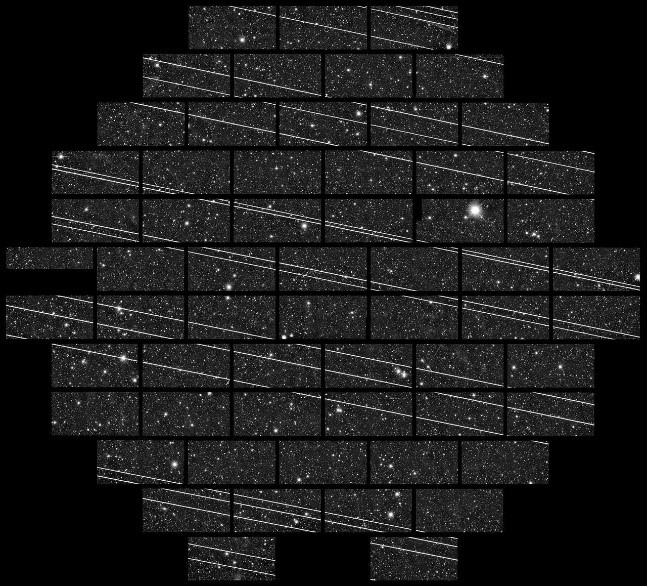
Figure 1. An image with an exposure of 333 seconds in a wide field (2.3 degrees across) from the Dark Energy Camera on the 4-meter Victor M. Blanco Telescope at the Cerro Tololo Observatory, November 18, 2019. Several Starlink satellites crossed the field of view.
Credit: CTIO/NOIRLab/NSF/AURA/DECam DELVE Survey
The technology proposed by the StealthTransit Team shows that this type of light pollution can be avoided when observing with long exposures on many telescope models using the so-called active shutter. This means that the shutter interrupts the exposure of the astronomical camera for a short time while the satellite is visible, without interrupting the integration mode of the photosensor.
Considering the high angular velocity of satellites when observing from Earth, the main focus of our research was the accuracy of the satellite's trajectory and the shutter response time. The prototype, equipped with a machine vision system, predicts the position of satellites with an accuracy of 2 arc minutes, as well as their moment of passage through the telescope's field of view with an accuracy of 30 milliseconds. The recognition process is organized as a pipeline with a period of 0.5−2 seconds. Thus, a fast response allows the exposure to be paused in time, even if a satellite is detected at a short distance from the telescope's field of view.
The StealthTransit system consists of three main components (see Figure 2):
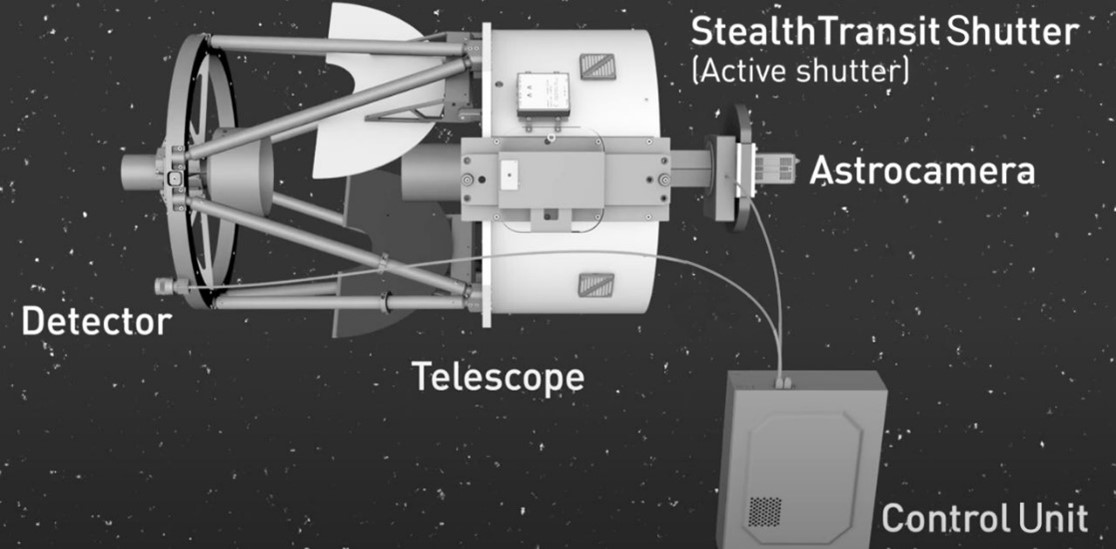
Figure 2. StealthTransit System
Modern astronomical cameras typically do not allow direct control of the shutter without interrupting the exposure. The addition of this feature to the future series of professional astronomical cameras will provide a convenient and optimal way to use the Active Shutter Technology without the need for external devices, such as the StealthTransit Shutter depicted in Figure 3.
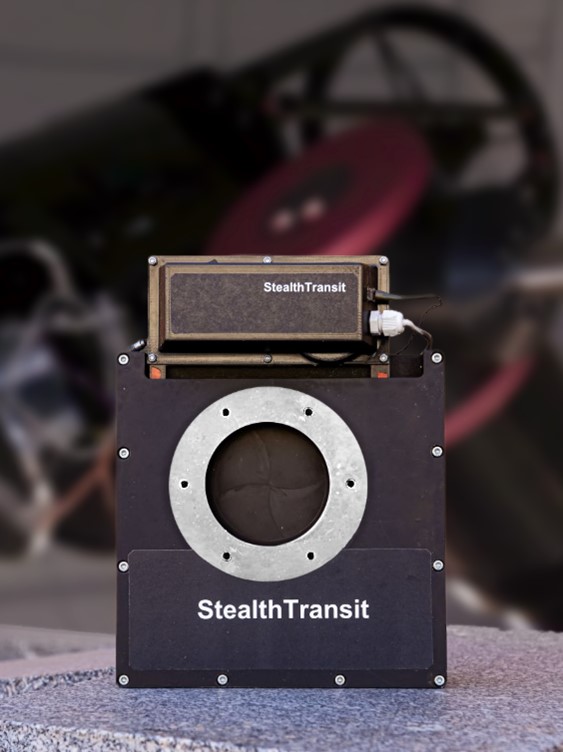
Figure 3. StealthTransit Shutter
The Control Unit receives satellite trajectory data from the Bright Satellite Detector and Space Situational Awareness (SSA) databases. But, unlike SSA, the Detector not only provides higher accuracy in prediction of transit time but also allows the system to assess the brightness and threat of each object. The system closes the shutter at the moment when a bright satellite crosses the boundary of the telescope's field of view and opens the shutter when the satellite leaves the field of view.
The prototype of the StealthTransit System, which is currently being prepared for installation in the observatory, has a spatial resolution of 10x10 degrees. An example of the output image from the prototype is presented in Figure 4.
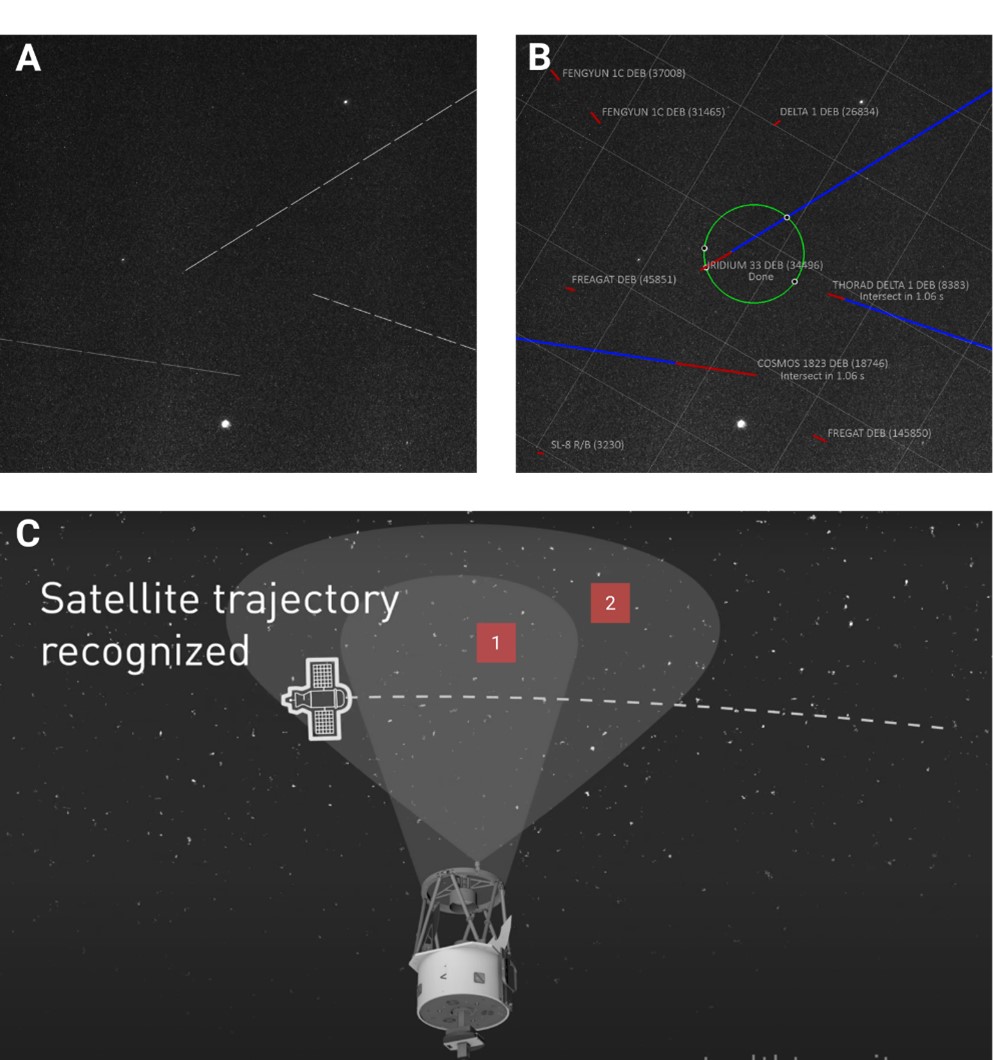
Figure 4. (A) Example of the satellite trails captured by the detector camera.
(B) Processed image with overlay information: satellite data from the Database (including invisible satellites), recognized visible trails, coordinate system, intersection prediction with the main FOV.
(C) Satellite recognition:
(1) Telescope's field of view, (2) Satellite detector's field of view.
The Detector can recognize both individual satellites and dense clusters of objects such as satellite groups and process them separately. The resolution of the system depends on the optics and, if necessary, allows it to recognize satellite arrays (see Figure 5).
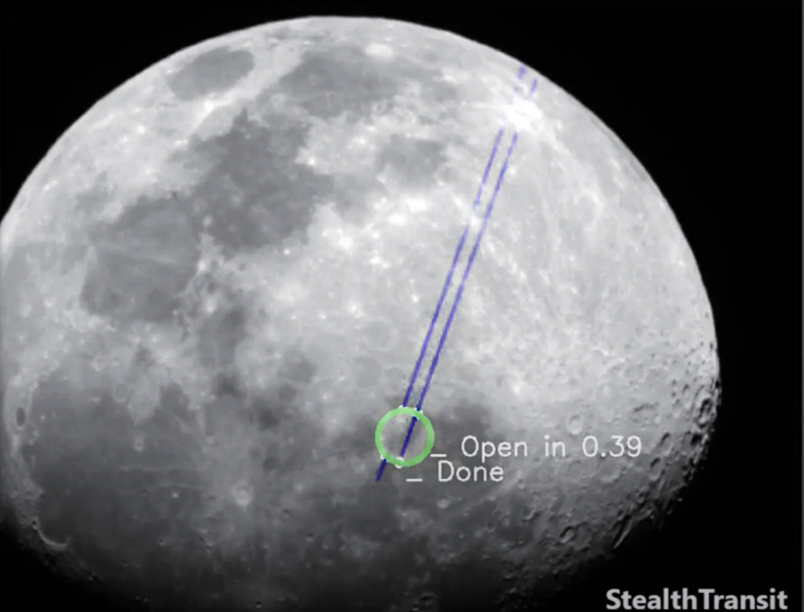
Figure 5. Satellite array trails recognised by the StealthTransit software. Credit of the original footage: Anatoliy (Instagram: @dam045)
The 80 millimeter aperture of the Active Shutter allows it to be mounted on a wide range of professional telescopes. The StealthTransit prototype was developed for the ASA600 22x22 arc-minute FOV telescope (ASA Astrosysteme GMBH) equipped with an Andor iKON 936 L camera shown in Figure 6.

Figure 6. ASA600 telescope with an Andor camera, Russia.
Credit: ASA Astrosysteme GMBH
The vital part of the StealthTransit System is the original software developed for the Prototype. It combines machine vision and video processing modules, online SSA database connectors, and prediction algorithms to recognize object trajectories based on the camera video stream. Every object that interrupts the field of view is analysed by the software. For an accurate prediction, it's enough to track the satellite within 1-2 degrees of its apparent motion.
The number of objects in Low-Earth orbit is rapidly increasing. At the end of April 2021, there were about 8,000 satellites in space, not including space debris, and every year their number grows by at least 30%. SpaceX and OneWeb, which will soon be joined by Amazon Kuiper and Telesat, are the main contributors to this increase. The total number of new satellites related to these companies alone will exceed 80,000 [3] in the coming years. This means that the problematic impact of satellites on astronomy and astronomical images is becoming more and more acute. Figure 7 shows the density of visible satellite tracks crossing a 10 degrees part of the sky during 1 hour of observations.
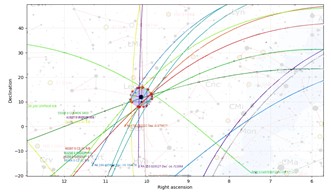
Figure 7. The density of satellite trajectories, visible with a naked eye on a section of the starry sky with a diameter of 10 degrees in the constellation Leo in the observation interval of 1 hour.
Background image credit: Jim Cornmell
The StealthTransit system is one of a few tools that can help to mitigate the impact of satellites on astronomical observations. The active shutter approach underlying the StealthTransit technology is included in the list of recommendations for mitigating the impact of LEO-satellites suggested by the United Nations Office for Outer Space Affairs (UNOOSA), IAU, AAS and NOIRLab [4].
The software, algorithm, and the StealthTransit Active Shutter System were successfully tested in July 2021. In August 2021, the system will be installed on an ASA600 telescope and connected to an Andor iKON 936 L camera for more detailed full-scale testing. The tests will be carried out at the Caucasian Mountain Observatory (Kislovodsk, Russia), owned and operated by the Sternberg Astronomical Institute.
Date: August 2021
Author: Vladimir Pashkovsky, Stanislav Karpikov, PhD; and Aleksey Balashov
Category: Case Study
